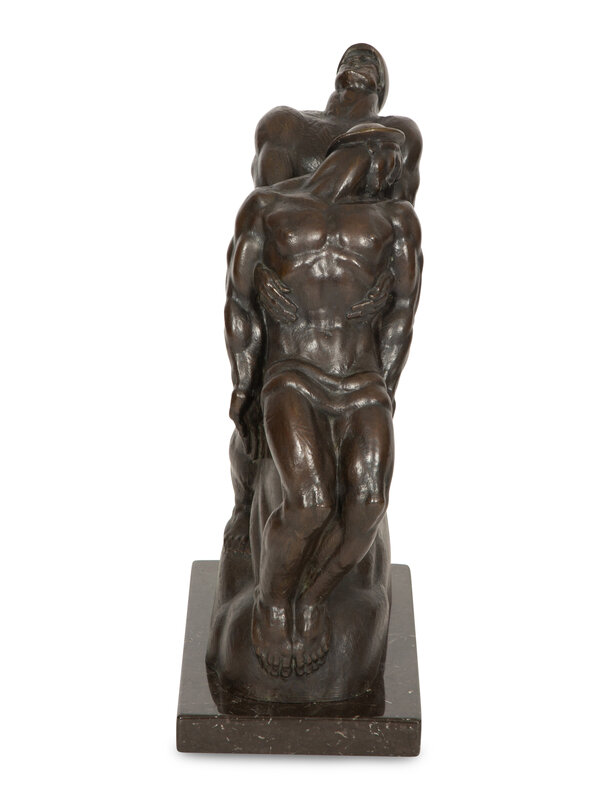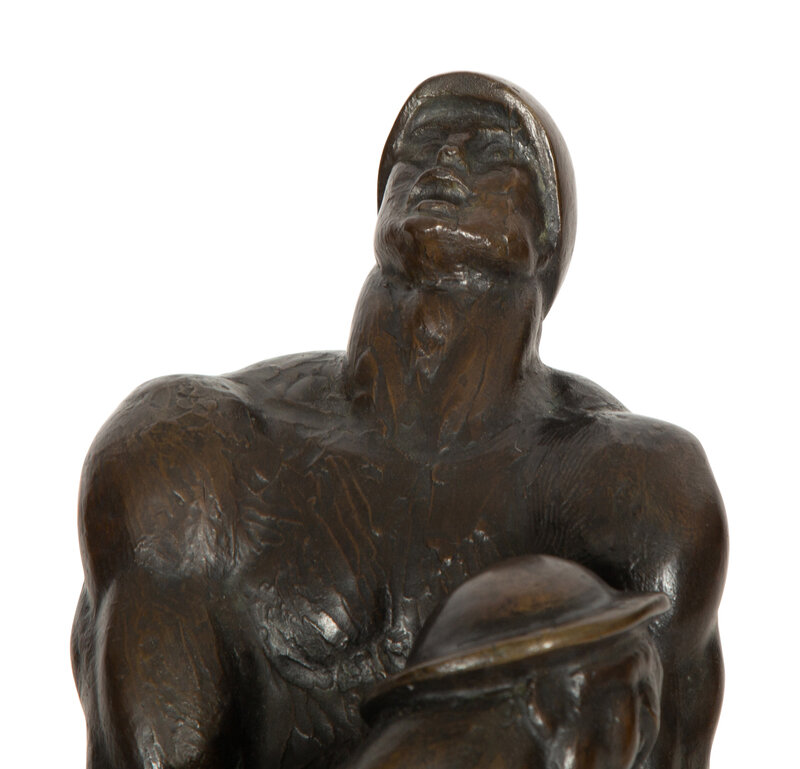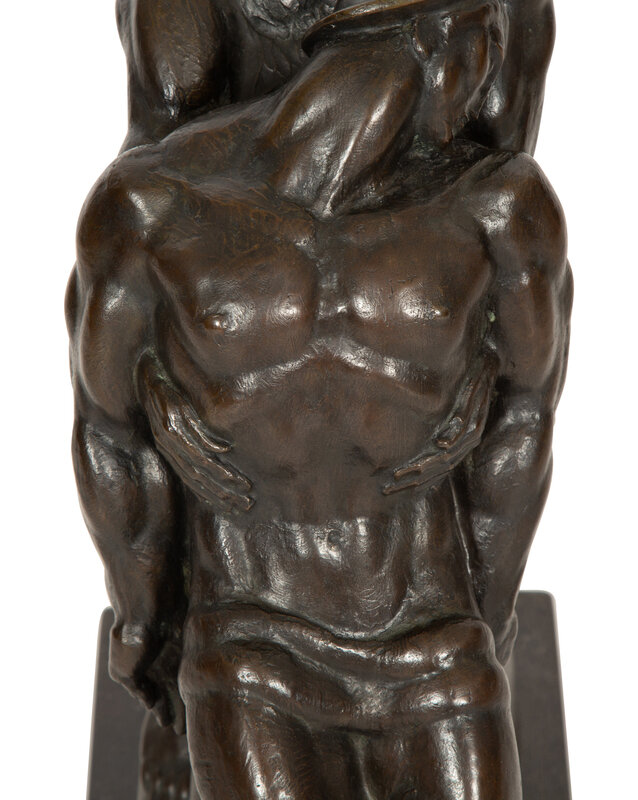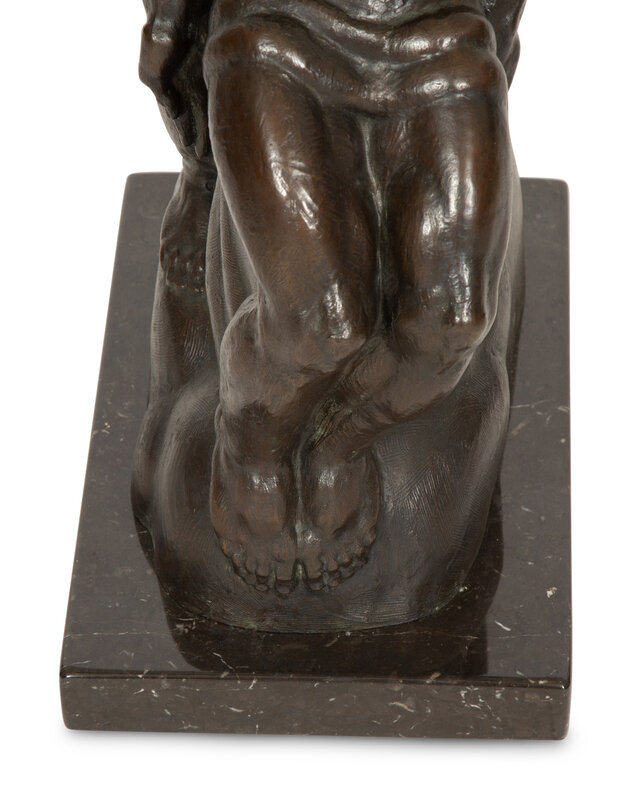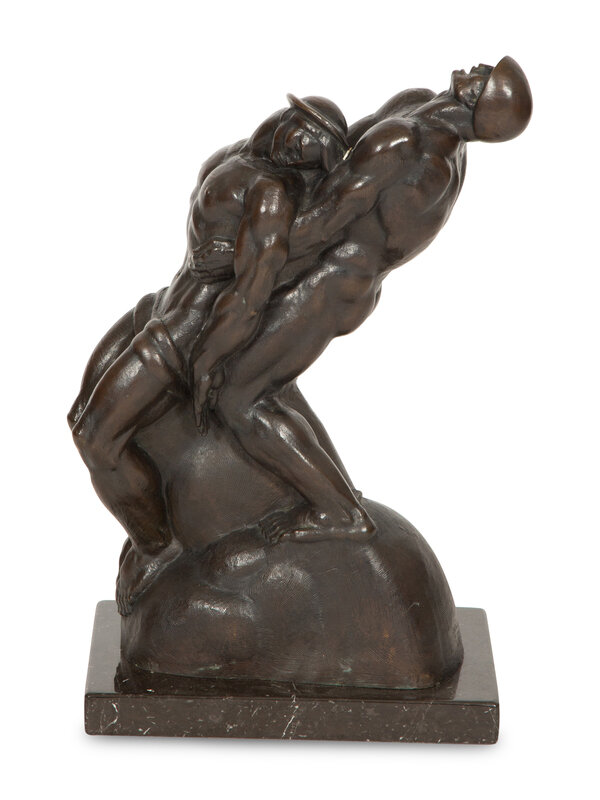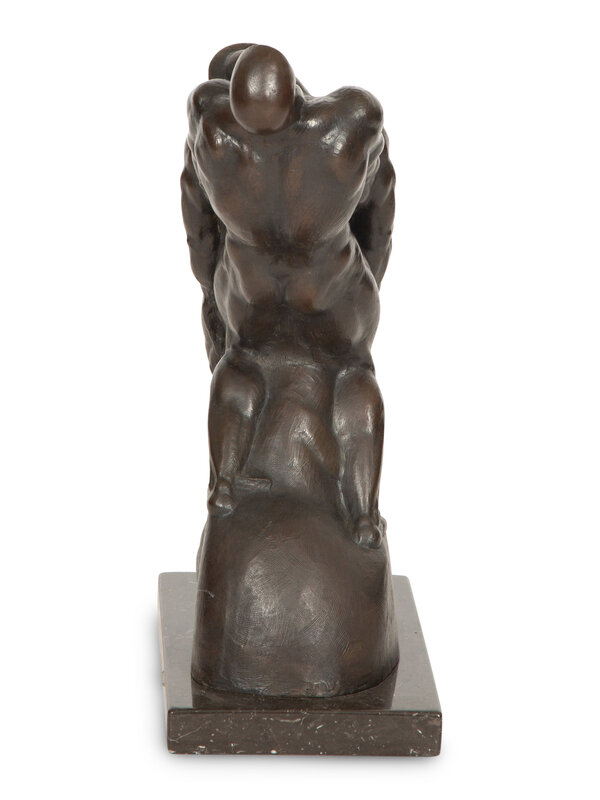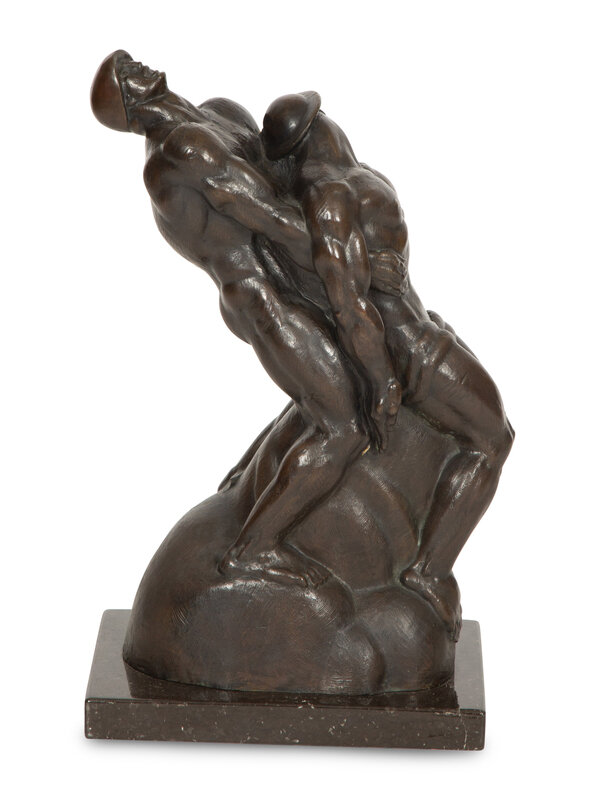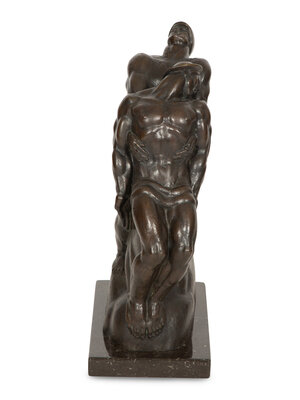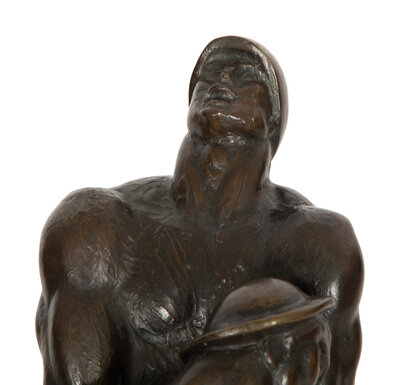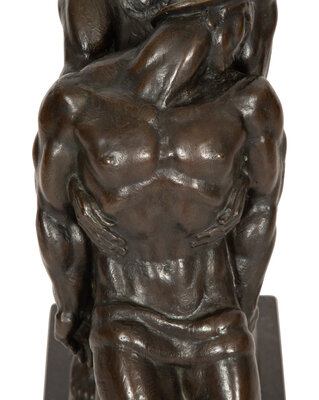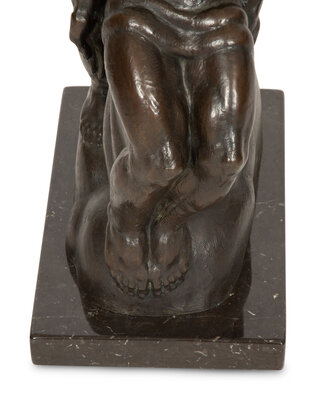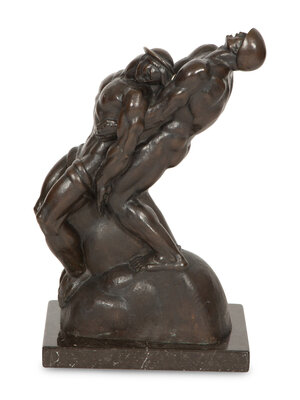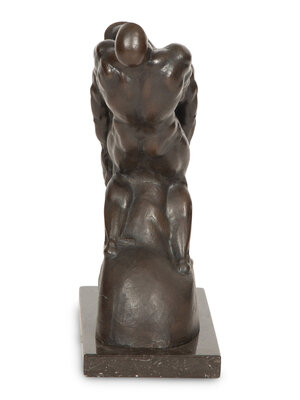Lot 22
Donald de Lue
(American, 1897-1988)
God's High Altar
Sale 1339 - American Art
May 16, 2024
2:00PM CT
Live / Chicago
Own a similar item?
Estimate
$6,000 -
8,000
Price Realized
$5,398
Sold prices are inclusive of Buyer’s Premium
Lot Description
Donald de Lue
(American, 1897-1988)
God's High Altar
bronze with brown patina
signed De Lue, dated SC 1950 and © 1986, numbered 3/12, and stamped with the TX monogram for the Tallix Foundry in Beacon, New York (rear of base)
Height: 23 1/4 inches.
Literature:
D. Roger Howlett, The Sculpture of Donald De Lue: Gods, Prophets, and Heroes, Boston, 1990, pp. 64; 67 (another cast illustrated)
Lot note:
With a career spanning sixty years, the artist Donald De Lue is considered one of 20th century America’s greatest monumental sculptors in the Realist style. Born in 1897 in Boston, at the age of 12 he apprenticed with Boston sculptor Richard Recchia, and later studied with Bela Pratt at the Museum of Fine Arts, Boston, as well as Robert Baker. After World War I, De Lue spent five years in France, where he worked for several sculptors, including Alfredo Pena. It was under these sculptors’ influence that he learned to sculpt the human body accurately and from memory and began to break away from literal interpretations of his subjects. After he returned to the United States, the artist served from 1923-1938 as chief assistant to the portrait sculptor Bryant Baker in New York City. With Baker, he honed his skills and became known as a “sculptor’s sculptor” for his mastery of anatomy. By the late 1930's, De Lue had developed his mature style, and his own career began to flourish.
“His sculpture demonstrates artistic links to both Greco-Roman and late Renaissance sculptors,” writes Jonathan L. Fairbanks, Emeritus Curator of American Figurative Sculpture Catalogue, Museum of Fine Arts, Boston. “He emulated the exuberant gestures and energetic composition such as those found at Pergamum. The mature Michelangelo especially inspired De Lue to compose his figures with mannerist proportions, emphasized with highly articulated musculature. However, by combining these older influences with the ideas and techniques acquired during his stay in Europe… De Lue developed his own synthesis. As he admitted, 'Although my work is traditional, it is a tradition of my own’.”
The artist first won recognition in 1938 as runner-up in a competition for the Federal Trade Commission Building in Washington, DC. Several government commissions followed, the first of which were reliefs for the Philadelphia courthouse, completed in 1940. In the next almost fifty years, De Lue probably executed more monumental commissions than anyone else of his generation. Most notable are his works Spirit of American Youth Rising from the Waves and Rocket Thrower for the 1964 World's Fair in Flushing Meadows, New York.
God’s High Altar was originally developed by De Lue in 1947 as a potential monument to the infantrymen of World War II. In this work, references to Renaissance and Baroque depictions of the descent from the cross and the entombment of Christ are evident. It may be that the artist took fully to heart the idea advocated by John Harbeson, consulting architect to the American Battle Monuments Commission from 1945 to 1980, that the memorials to World War II should embody the “sacrifice motive,” rather than the “glory motive” of war. The sculpture casts the bodies and rock together into a bold and poignant statement of sacrifice.
Condition Report
Contact Information
Auction Specialist
